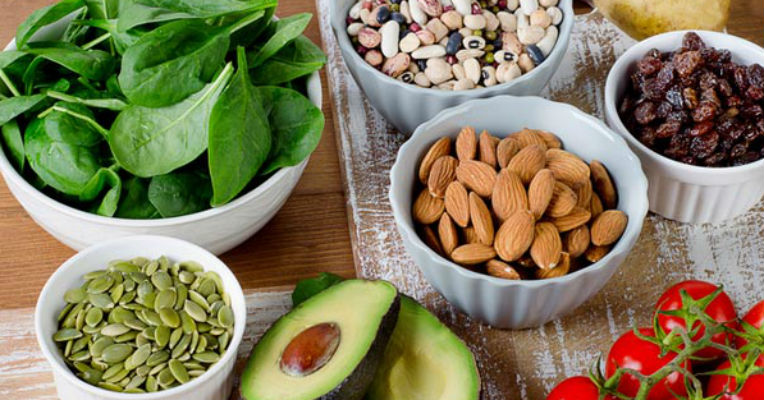Potassium is a mineral that your body needs in the right amount to function properly. It has many roles in the body including:
- Helping nerves to function properly
- Allowing muscles to contract
- Helping keep a regular heartbeat
- Helping to move nutrients and fluids in and out of cells
- Limiting sodium’s harmful effects on blood pressure
- Reducing the risk of recurrent kidney stones
- Limiting bone loss
Download Healthful Habits: Potassium
How to Get What You Need
Males need 3,400 mg of potassium a day and females need 2,600 mg. A varied healthful diet can provide the needed potassium, although many people don’t consume enough potassium-rich foods to meet the recommended amounts. Good sources of potassium in the diet include leafy greens, grapes and blackberries, root vegetables, citrus fruits, dairy products, meat, poultry, fish and nuts.
The best way to get what you need is to include a good variety of potassium rich foods in your diet daily.
Potassium-Rich Foods
| Food/Beverage | Serving Size | Potassium (mg) |
| Spinach, cooked | 1 cup | 840 |
| Potato | 1 medium | 755 |
| Raisins | ½ cup | 618 |
| Avocado | ½ medium | 604 |
| Nu-Salt Salt Substitute | 1/6 teaspoon | 530 |
| Broccoli, cooked | 1 cup | 460 |
| Tomato, diced | 1 cup | 430 |
| Banana | 1 medium | 420 |
| Carrots, raw slices | 1 cup | 390 |
| Fish | 3 oz. | 380 |
| Lentils, cooked | ½ cup | 365 |
| Milk, low fat | 1 cup | 350 |
| Red Beans, Cooked | 2/3 cup | 340 |
| Quinoa, cooked | 1 cup | 320 |
| Peanuts | 1 oz. | 296 |
| Cantaloupe | ¼ melon | 251 |
Potassium Supplements
Obtaining potassium from foods is the best option, but if you are diagnosed with a potassium deficiency, you may not be able to get enough potassium from the foods that you eat. Your doctor may prescribe a supplement to improve your potassium level. Remember to cut the supplement into pieces smaller than an M & M. After 3 months, a lab test should be done to determine if the supplement is providing the level of this nutrient that your body requires. Don’t supplement without a physician’s direction—high potassium levels, just like low potassium levels, can be dangerous.


